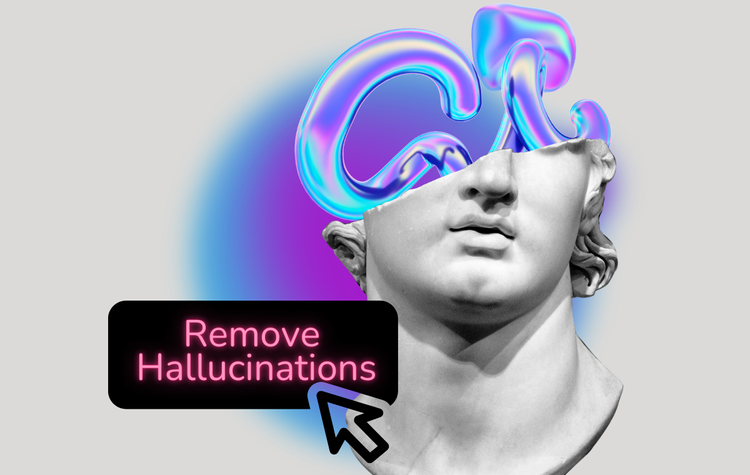Exploring the Different Types of Chatbots
There are many different types of chatbots. Generative AI chatbots are the newest and most advanced type of chatbot, and they offer many benefits to both consumers and brands.

Customer support is transforming significantly. Gone are the days of endless waiting on hold or sifting through complex IVR menus. Instead, the spotlight is now on AI chatbots - the digital assistants that are changing customer service.
This comprehensive guide will explore the diverse types of chatbots and how they play a pivotal role in modern businesses. Generative AI chatbots are the newest and most advanced type of chatbot, and they offer many benefits to both consumers and brands.
The Changing Landscape of Chatbot Technology
The ever-evolving needs of businesses and advancements in artificial intelligence drive changes in chatbots. Chatbots have become valuable tools to make customer support more efficient and enhance user experiences.
Rule-Based Chatbots
Rule-based chatbots are the basic type of chatbot, operating on predefined rules. They are ideal for handling straightforward and predictable tasks. Rule-based chatbots require a specific set of rules or decision trees.
The chatbot first displays a question to the end user: "How can I assist you today?"
The user can select from a set of pre-determined choices, e.g. "What is your shipping policy?" "What is your return policy?" etc.
The chatbot can then show either a pre-determined answer, like "Our standard shipping policy is 4 days." The chatbot can also respond with a follow-up question and a sub-menu of pre-determined choices.
For the user, it's like navigating a interactive voice response (IVR) tree. Instead of pressing a number on their phone, they're clicking on a pre-determined choice.
Rule-based chatbots are can help companies looking to answer routine customer questions.
These chatbots, however, can be frustrating user experiences because they typically don't allow the customer to enter free-form questions. Writing and maintaining all the rules/decision trees can be very time consuming as well.
Keyword Matching Chatbots
Keyword matching chatbots represent a significant improvement over rule-based chatbots.
These chatbots allow the user to type in free-form questions instead of restricting them to a menu of choices.
Keyword matching chatbots simply detect the presence of keywords within the user's question.
Each pre-determined keyword is mapped to a pre-determined answer.
Keyword matching improves the user input. However, because keyword matching is relatively unsophisticated, the response can still be ill-suited and not fully match the intent or context of the question.
Additionally, keyword matching chatbots require administrators to create an maintain a large list of keywords and their corresponding answers.
NLP/Question-Matching Chatbots
Natural language processing (NLP) chatbots bring a higher level of sophistication to customer support. Many people refer to these as "conversational AI chatbots."
Instead of searching for keywords, these chatbots then use NLP to decipher the intent behind user queries. Then the chatbot matches the query into to a list of pre-determined questions and corresponding answers.
The NLP chatbot will often respond to the user, "I think you were asking a question related to the following." and then show the pre-determined question and the corresponding answer. As such, you can think of an NLP chatbot as a question-matching chatbot.
NLP chatbots provide better user experiences than rule-based chatbots and keyword matching chatbots. They can, however, still have difficulty comprehending complex customer questions.
Like keyword matching chatbots, an NLP chatbot requires a fair amount of work to set-up and maintain.
You'll need to create a comprehensive list of frequently asked questions (FAQ), along with the answers to those questions. Shorter FAQs increase the odds of the chatbot responding with, "I'm sorry, I didn't understand your question."
In addition, you might need to create many different ways to ask the same question. This will increase your workload, but it will improve the chatbot's question matching capabilities.
You'll also need to keep the FAQ updated.
Generative AI Chatbots
Generative AI chatbots are the newest type of chatbot.
Generative AI chatbots use large language models ("LLMs") to understand the user's query and compose a response. The most famous generative AI chatbot is ChatGPT, created by OpenAI.
LLMs are deep learning AI models that are very good at predicting the next word in a conversation. As a result, generative AI chatbots can write completely original responses and have human-like conversations with end users.
Generative AI chatbots have many benefits over NLP or question-matching chatbots.
For the consumer, generative AI chatbots are better because:
- They are much better at understanding complex, nuanced questions.
- The can automatically detect the user's language and respond in that language -- regardless of the language of the underlying knowledge. This helps to overcome foreign language barriers in customer service.
- They are better at understanding the full context of the conversation.
- The conversations between customers is much more natural. Chatting with a generative AI chatbot is like chatting with a real human being.
- Generative AI chatbots tend to be more empathetic.
For brands, generative AI chatbots are better because:
- They can ingest your full proprietary knowledge base, e.g., product documents, help desk responses, email responses, etc. You don't need to write a full FAQ and different versions of the same question.
- They are easier to maintain. Generative AI chatbots don't rely on FAQs, you don't need to worry about keeping a FAQ up to date. You can just have the generative AI chatbot re-ingest your entire knowledge base.
- Because generative AI chatbots are better at understanding complex questions, they're better at resolving customer issues. As a result, you will see higher deflection rates, higher CSAT scores, higher NPS scores, faster resolution times, and customer loyalty are higher.
Conclusion
The world of chatbots is rich and diverse, offering various solutions to meet the needs of contemporary businesses. Choosing the right chatbot type that aligns with your company's unique requirements is key.
Using chatbots, businesses can transform their customer support, reduce response times, and provide a more personalized and efficient service.
Are you ready to transform your customer service with generative AI? Create an AI chatbot for free now with Gleen AI, or request a demo of Gleen AI.



